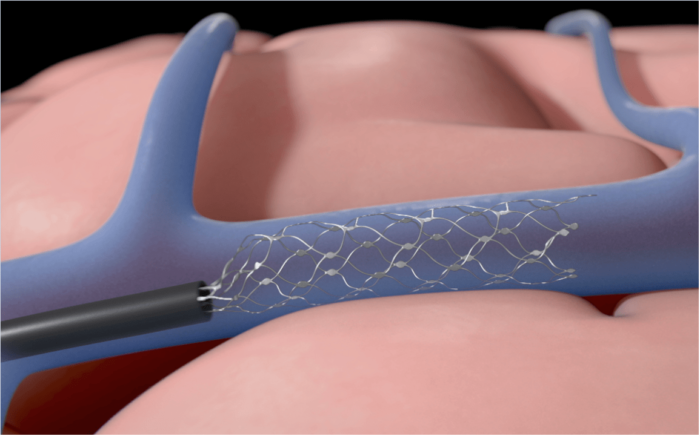Oct 29 2020
Brain-Machine Interface with Stentrode
 Brain-Machine interface (BMI) technology continues to incrementally but steadily progress, and I do think this is one of the technologies that will transform our future. Studies have already demonstrated that there are no biological or theoretical limitations to such technology – the brain happily communicates with computers and seamlessly incorporates signals to and from them through the existing process of brain plasticity. The real limitation with practical applications of BMI is technological, mostly in designing electrodes that can safely work for a long time.
Brain-Machine interface (BMI) technology continues to incrementally but steadily progress, and I do think this is one of the technologies that will transform our future. Studies have already demonstrated that there are no biological or theoretical limitations to such technology – the brain happily communicates with computers and seamlessly incorporates signals to and from them through the existing process of brain plasticity. The real limitation with practical applications of BMI is technological, mostly in designing electrodes that can safely work for a long time.
As I have discussed before, there are numerous approaches. Scalp surface electrodes are safe and easy, but have no resolution because the skull attenuates signals to and from the brain. Brain surface electrodes work much better, but they are invasive and tend to form scar tissue which can limit their lifespan. Microwires are a cutting edge approach, very thin hair-like wires that penetrate the brain, and can have both high resolution and long term safety. There is also the clever approach of putting the electrodes inside blood vessels in the brain. One company, Synchron, has been developing this technology since 2010 and their device, the Stentrode (a portmanteau of stent and electrode), has now completed a preliminary human trial.
The idea is to insert electrodes the way a stent would be placed inside a blood vessel to treat a blockage. The advantage here is that the endovascular stent technology already exists. They just had to make the stent out of electrodes, which they did. The huge advantage here is that you can get electrodes inside the skull and next to the brain without opening the skull or doing brain surgery. The brain itself is never penetrated. The electrodes are not as intimate with brain tissue as brain surface or penetrating electrodes, but that’s the tradeoff. The question is – how much efficacy can we get from endovascular electrodes?
Much of the research previously has been done on animals, mostly sheep and pigs. Initially the electrodes were connected directly to an external control device that also provides power. But this requires wires to go through the blood vessel to the outside, which is an infection risk. The latest design, the one studied recently, communicates wirelessly to a control box worn by the subject. The only mention I could find of how the electrodes are powered suggests they are powered wirelessly through this control box. This setup could potentially send and receive signals from the Stentrode.
In the current study they looked at the ability of paralyzed subjects to control a Windows 10 operating system through the Stentrode device. However, they combined this with eye-tracking technology, so it was not entirely controlled through BMI. The eye-tracking was how they moved the mouse cursor, and the BMI was how they clicked the mouse (with several distinct “mouse click actions”). While very basic, this setup allowed the subjects to interface with the computer – to write texts, send messages, and control devices. That may not seem like much, but if you are paralyzed any measure of independence is a big deal.
I see this as mainly a proof of concept study – showing that Stentrode can be safe in humans, and can successfully read signals from the brain, sufficient to train a user to click a mouse with their mind. Yes, this is a baby step, but as I have recounted many times before most scientific advances are journeys may of hundreds or thousands of baby steps. I am actually impressed that this technology has progressed as quickly as it has, with a decade from initial concept to successful human trial.
Now that we know that the technology functions, we can continue to make incremental improvements, and each one will add to its functionality. The smaller the Stentrode can be made, for example, the smaller the blood vessels it can be placed in, and the closer to the desired brain tissue it can get. Also, the more electrodes that can be placed, the greater the theoretical control. Fully controlling a computer mouse is the next step, both moving and clicking the mouse. Hopefully the resolution of this technology will be enough to eventually allow the selection of letters from a keyboard – think “A” and a “A” appears. That would be a huge step.
Put these electrodes near the motor and sensory cortex and you may also be able to control robotic devices to replace limb function, or just have independent robots to control your environment. The question is – what is the ultimate limit as determined by the resolution in which these electrodes are able to communicate with the brain? There will be some limit, but I don’t think we are anywhere near it yet. I do see Stentrode as partly a bridging technology, until something with much higher potential resolution like the microwires are perfected. There may also always be a niche for Stentrode for certain applications that don’t require full brain implants.
But it is also possible that other technological innovations may overcome the limitations of the Stentrode approach, and full endovascular BMI can be achieved. That would not surprise me. Again – we are in a good place with BMI, and all advances now are incremental and will just make it better.






